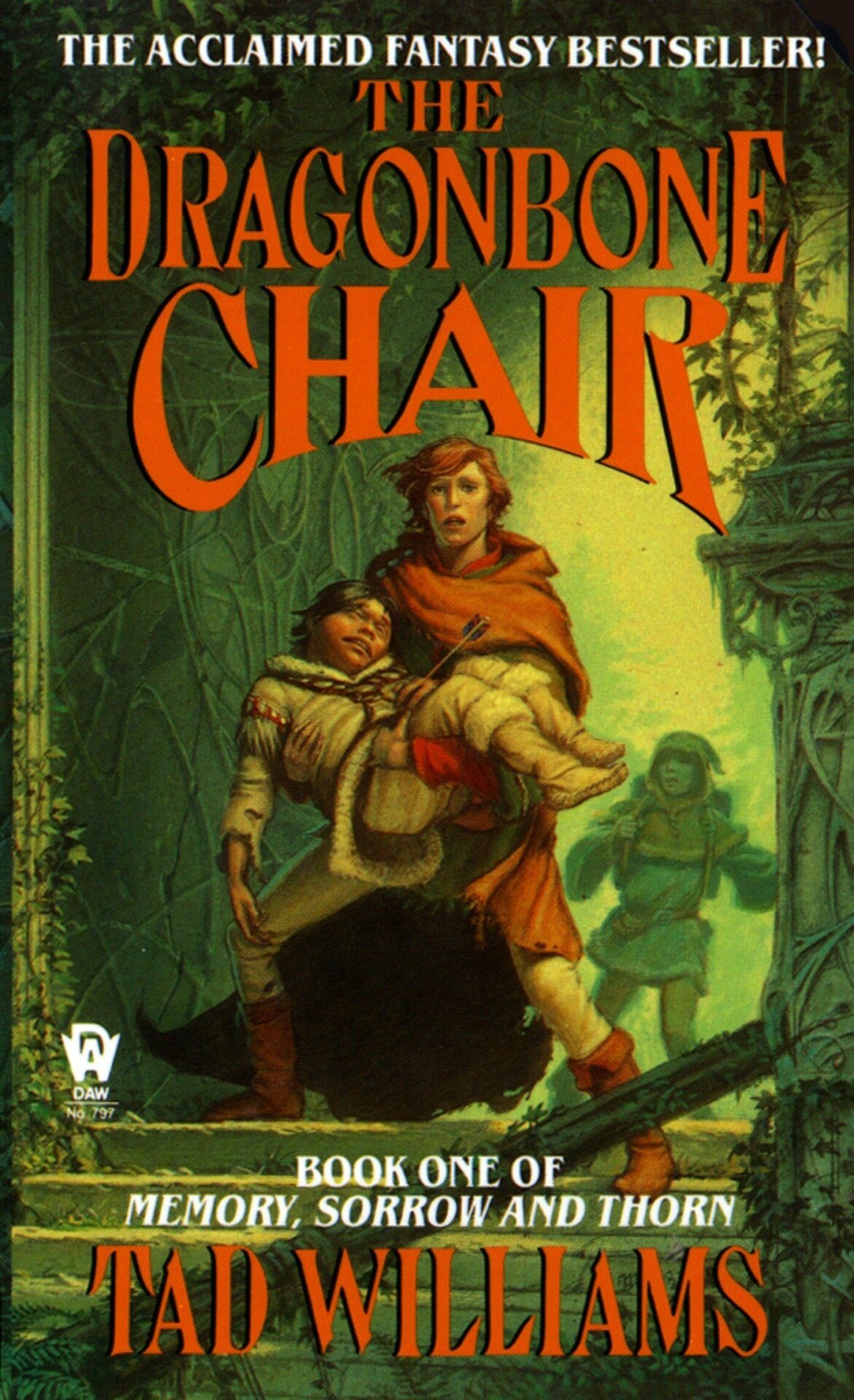
Fantasy
Tad Williams has a complex writing style that’s relatively easy to get used to, making reading the rather lengthy The Dragonbone Chair a breeze.

What a read! What a bloody good read!
The last couple of months has been quite good for me, reading-wise, as I’ve been on a streak of some quality books.
The Dragonbone Chair, long in my TBR, suddenly looked like the right thing to delve into, and, regardless of its considerable length, I was able to breeze through it in a manner reminiscent of my reading heyday, when, mostly unencumbered by life’s pressure, I was going through nearly a hundred books a year.
In the aftermath of the death of the High King of Osten Ard, Prester John, power passes on to his firstborn, Elias, who, under the influence of the dark wizard Pyrates, leads the land into dark days. His uneasy history with his younger, unambitious brother, Josua, plays into the hands of the wizard, who whispers poison into the High King’s ear, while blocking his ears to the cries of the people and the complaints of the nobles, who groan under the weight of illogical taxes.
For Simon, a.k.a Seoman, a regular boy working in the castle at Hayholt, the High King’s seat, fate has big things in store, as he is caught up, not just in the brewing civil conflict, but also in a growing battle against the invisible principalities of Osten Ard.
Between enemies and friends, Simon must grow out of his naivety and take up a role larger than his years, and vaster than his limited life experiences.
It’s impossible to speak of The Dragonbone Chair without mentioning A Song of Ice and Fire. G.R.R. Martin’s original inspiration for his renowned epic fantasy series doesn’t get as much credit as it deserves.
While ASOIAF stands out for its morally grey characters and deep political intrigue, the world of Osten Ard and its lore are understatedly superior to those of the former.
Storm King, Night King. Hayholt and King’s Landing. The government system with a High King ruling over subordinate lords of various kingdoms. The Iron Throne. The Dragonbone Chair. The parallels are plentiful.
However, the influences of Tolkien are more apparent in The Dragonbone Chair than in A Game of Thrones, where G.R.R. Martin does away with most of the classical tropes in the former. The Dragonbone Chair is the point where classical epic fantasy meets with the modern, less stereotypical subgenres.
Simon’s development is thrilling to see. While Robert Jordan, to me, is the peak of character development writing, Tad Williams is no shirker himself. The only difference is that Robert Jordan has a track record of doing it on a much larger scale, with a broader batch of characters.
As the main character in the story, we see the plot unfold mostly through Simon’s eyes. However, several other secondary characters are just as crucial to the plot.
Elias, Pyrates, Josua, and their many bannermen get several POVs to balance out Simon’s. In all, it makes for a sprawling omniscient narrative voice that, regardless, keeps readers engrossed, not just in the plot, but in the affairs of the ensemble.
When you’re reading a book, and you simply, at some point, have to download the map to start poring over it, you know that you’re dealing with vast, complex worldbuilding.
The world of Osten Ard and its many peoples: the Sithi, Nabbani, Rimmersmen, Hernysteri, Erkynlanders, and Trolls, is every bit as rich as what you’d expect of a classic fantasy author from the school of Tolkien. It’s engrossing. Not too heavy on magic. But magic still plays a significant role in the plot.
Tad Williams has a complex writing style that’s relatively easy to get used to, making reading the rather lengthy The Dragonbone Chair a breeze.
He switches narrative voices frequently, letting readers get a feel of things from several secondary characters through a limited third-person perspective that doesn’t give away too many spoilers. It makes for a book that is very easy to follow, despite the fact that there are so many characters, names, and places to remember.
For all its pros, The Dragonbone Chair didn’t have as much of a blockbuster ending as one would expect. But when the writing, characters, and plot are this good, any ending, really, will do.
This is one of those rare books where the journey is more important, and definitely more enjoyable than the satisfaction of reaching the destination.

The Tyrant Overlord. Fantasy buff and avid football fan.